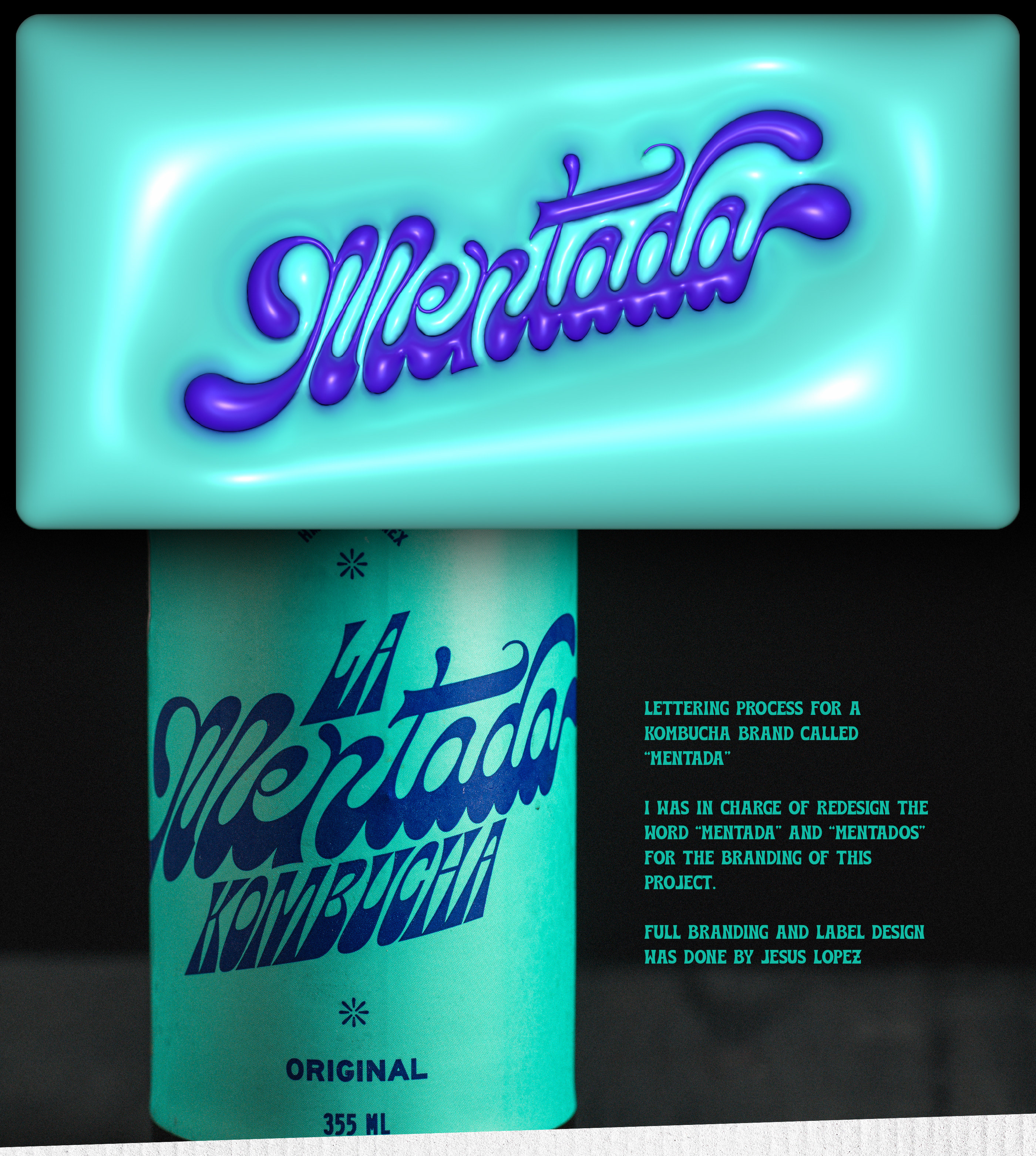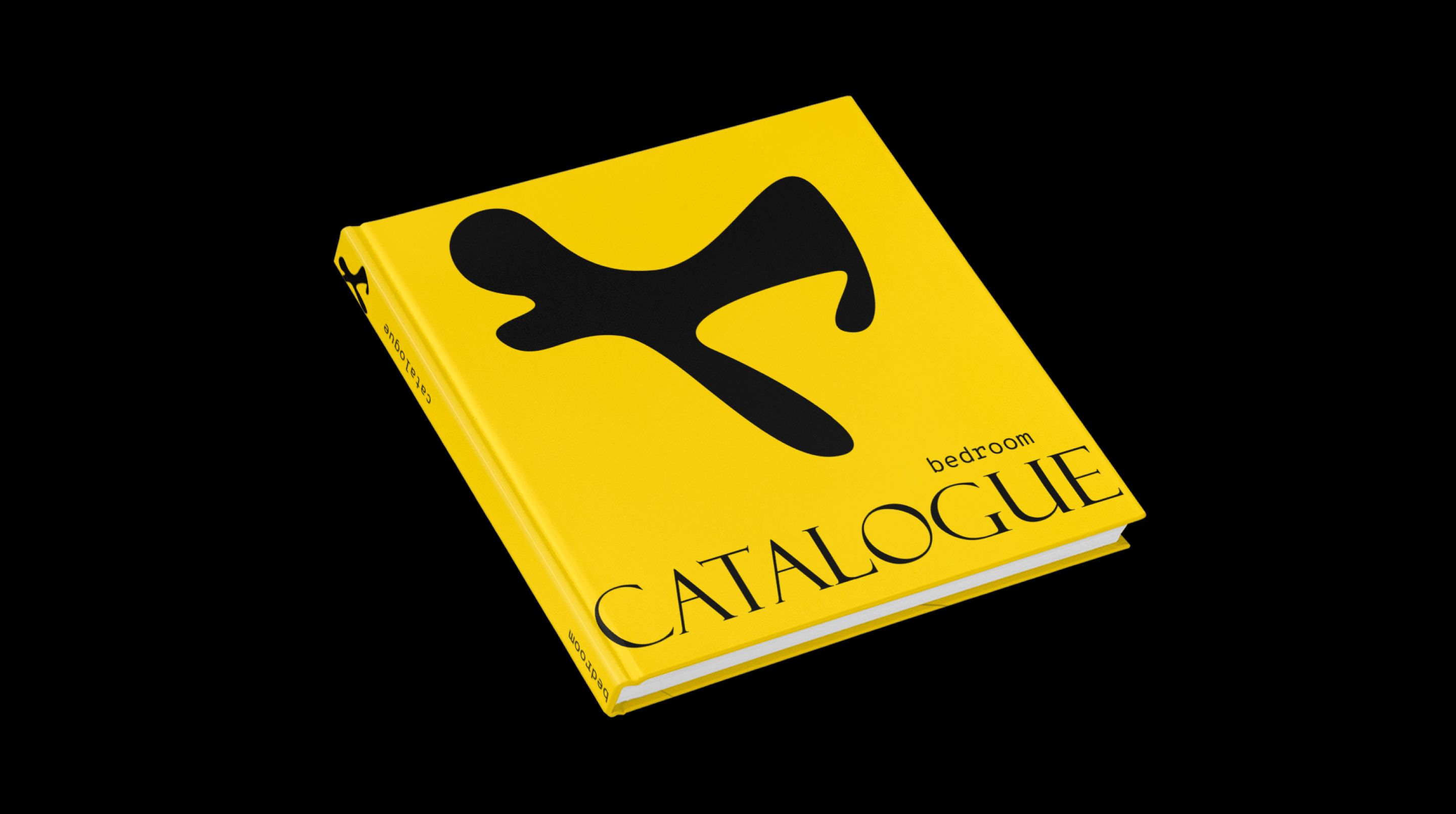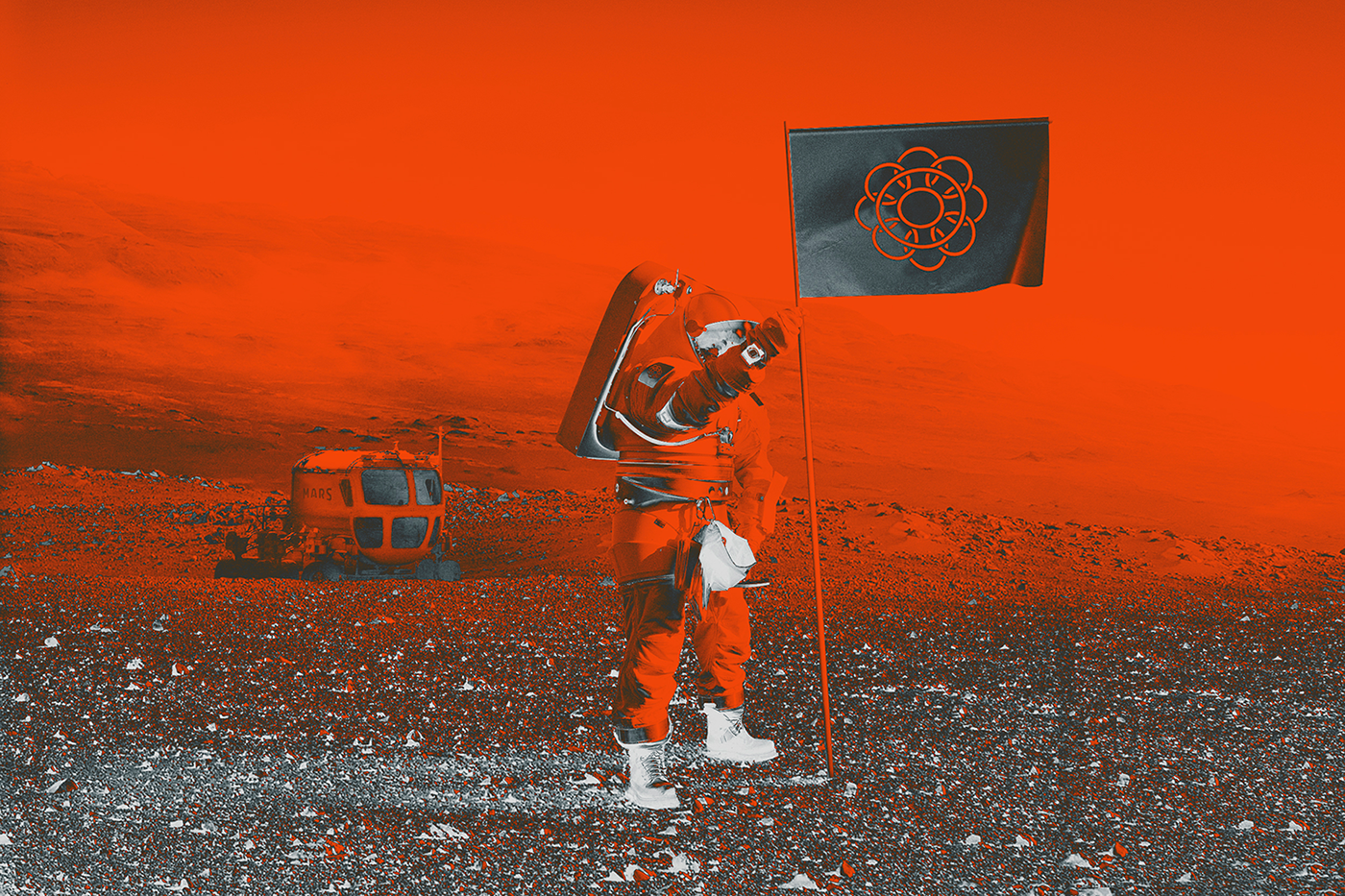
M A R S, O U R N E X T H O M E P L A N E T
Earth is facing a plethora of complex and interconnected problems: pollution, global warming, overpopulation, natural resources depletion, climate change, deforestation, ocean acidification and so many more. Even If we could stop all the problems at a time, this planet has some wounds that will be hard to heal. In the end, we may just need to go somewhere else. The colonization of Mars has always been one of the most fantastical desires for humanity. Now, within the next few years, mankind is at the doors of achieving what before seemed impossible… becoming a planetary civilization.

A B S T R A C T
We live in a world which changes faster than our grasp of it. In few years, we have managed to radically transform the way we live, our values, priorities, power and ideas, and this change has had unexpected consequences on Earth. In the future, we may just need to travel to another planet in order to survive.
That is the main thesis of this project: humans will be able to live on Mars in the long-term future. In order to prove it, I went through a deep research on three basic pillars of this project: future studies and speculative design, the red planet and cities.
Besides, I carried a parallel research on contemporary and past futurists and speculative designers who worked on the urban scale, such as Archigram, Paolo Soleri, Buckminster Fuller or Jacques Fresco, among others. They served as a source of inspiration and I tried to mix everything that I found interesting on their personal projects on my own proposal.
After having gathered all the necessary information about these three topics and collected inspiration, I developed a proposal for a speculative future city on Mars. The city is a huge underground facility that acts as an organism/system that can be adaptable to the conditions and grow as needed: a self-contained, self-replicated and self-sustainable city.
The city will be located on Valles Marineris, one of the best locations to start a civilization on Mars, and it will provide shelter, protection from radiation, water and oxygen as well as food and everything needed to sustain life on the Red Planet. In order to do this, the city will need to be highly technological, as well as the constructing and boring methods, based on current trends that are being developed nowadays and which are expected to grow and flourish on years to come, such as 3D printing or artificial intelligence.
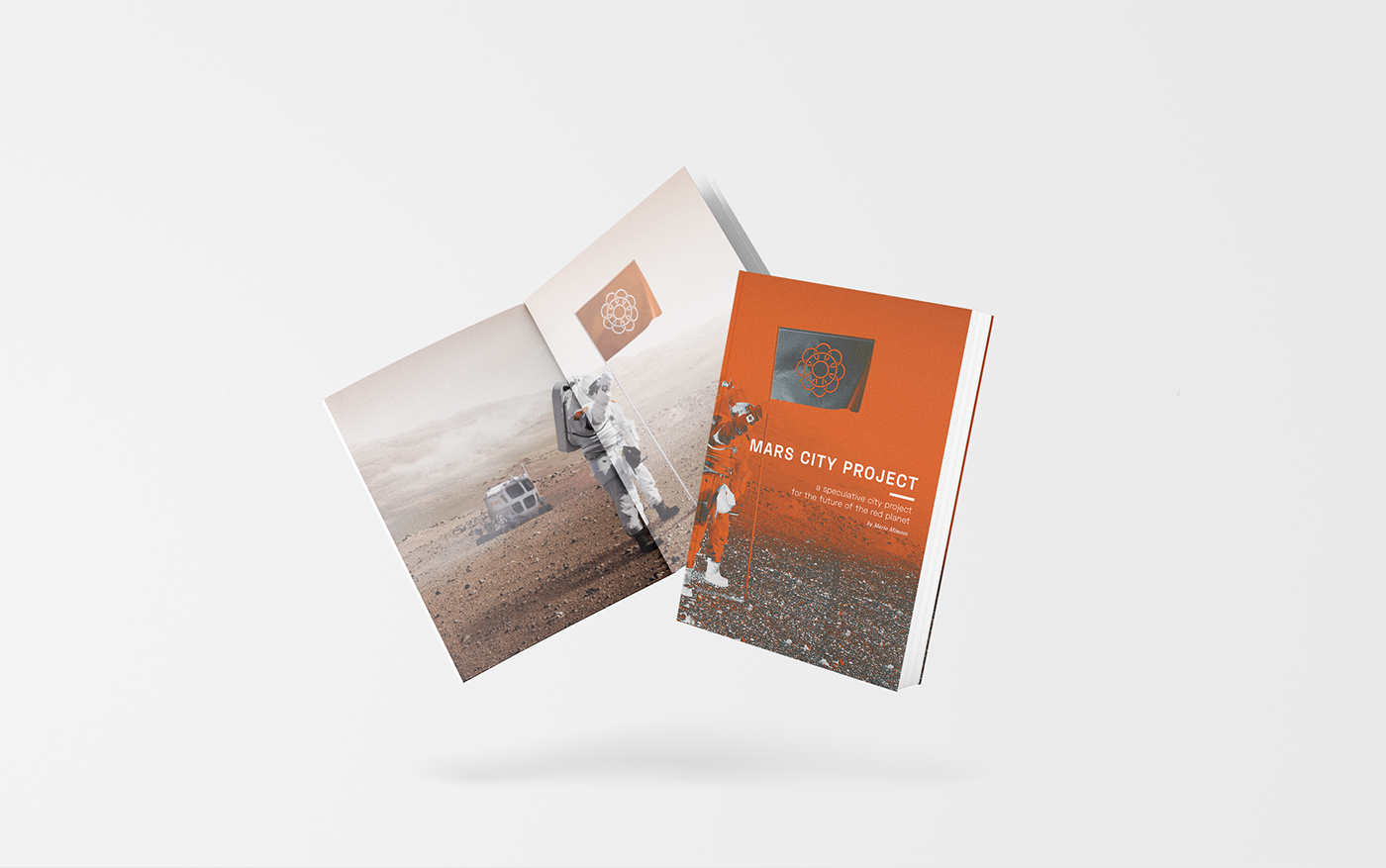
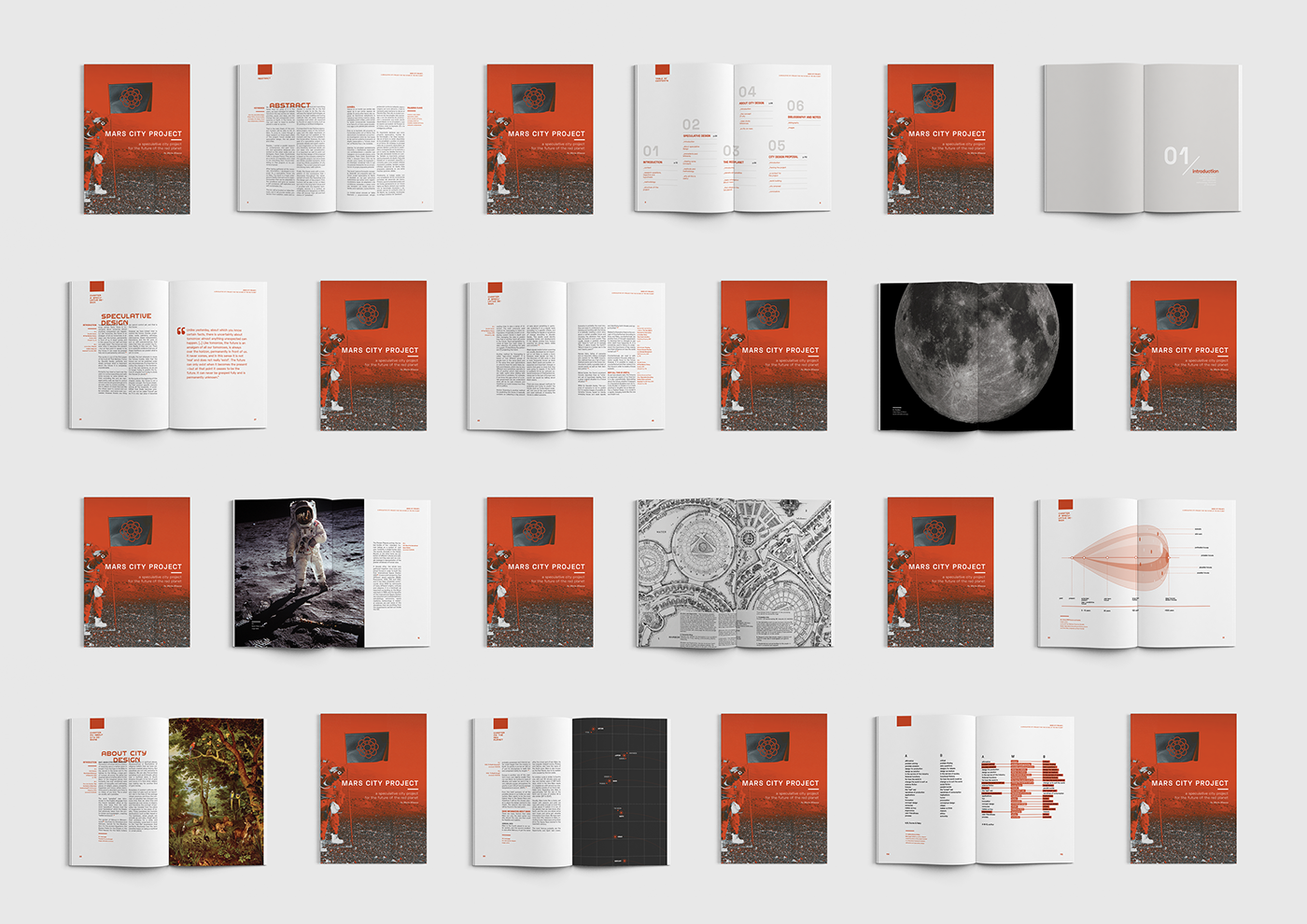






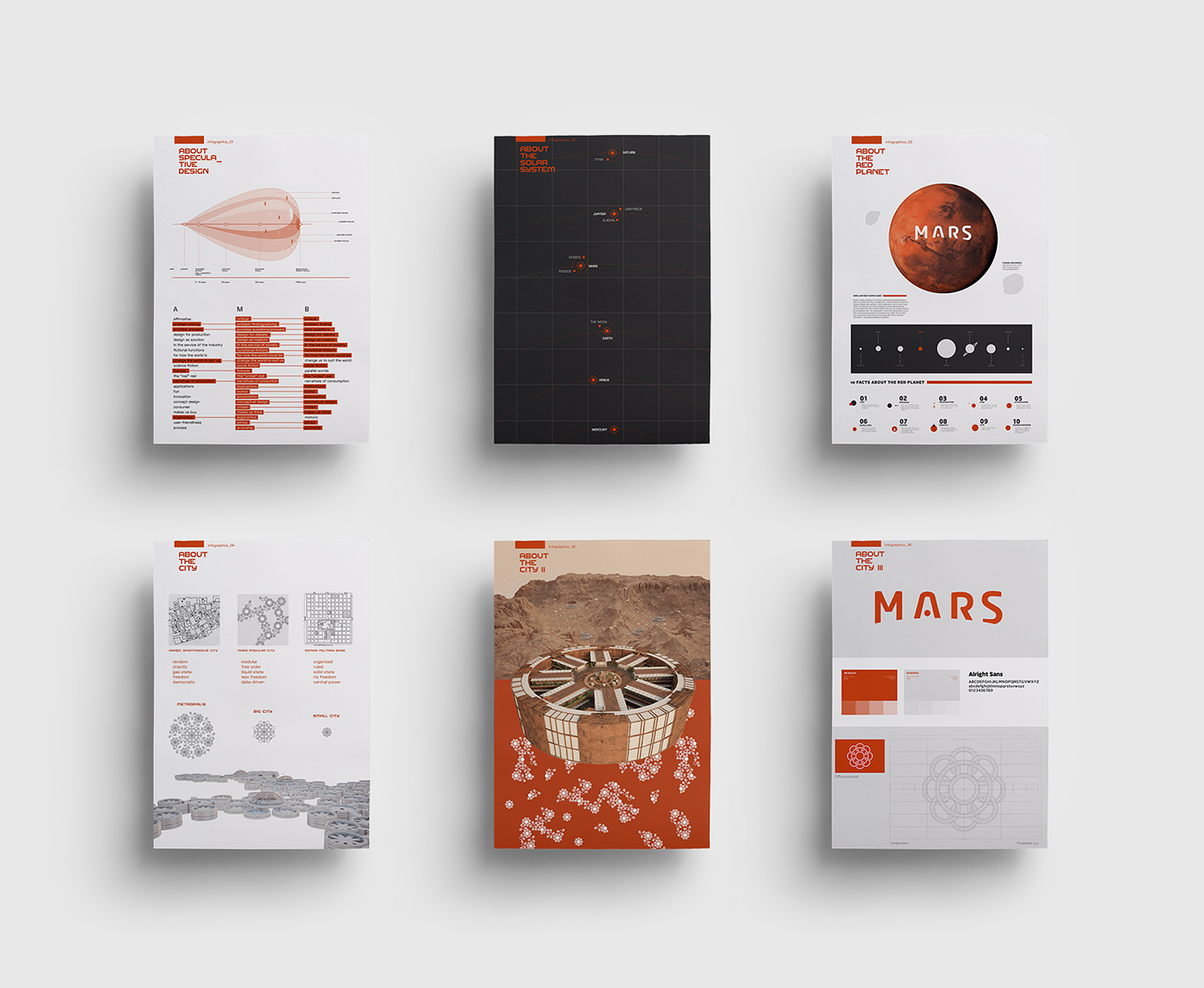
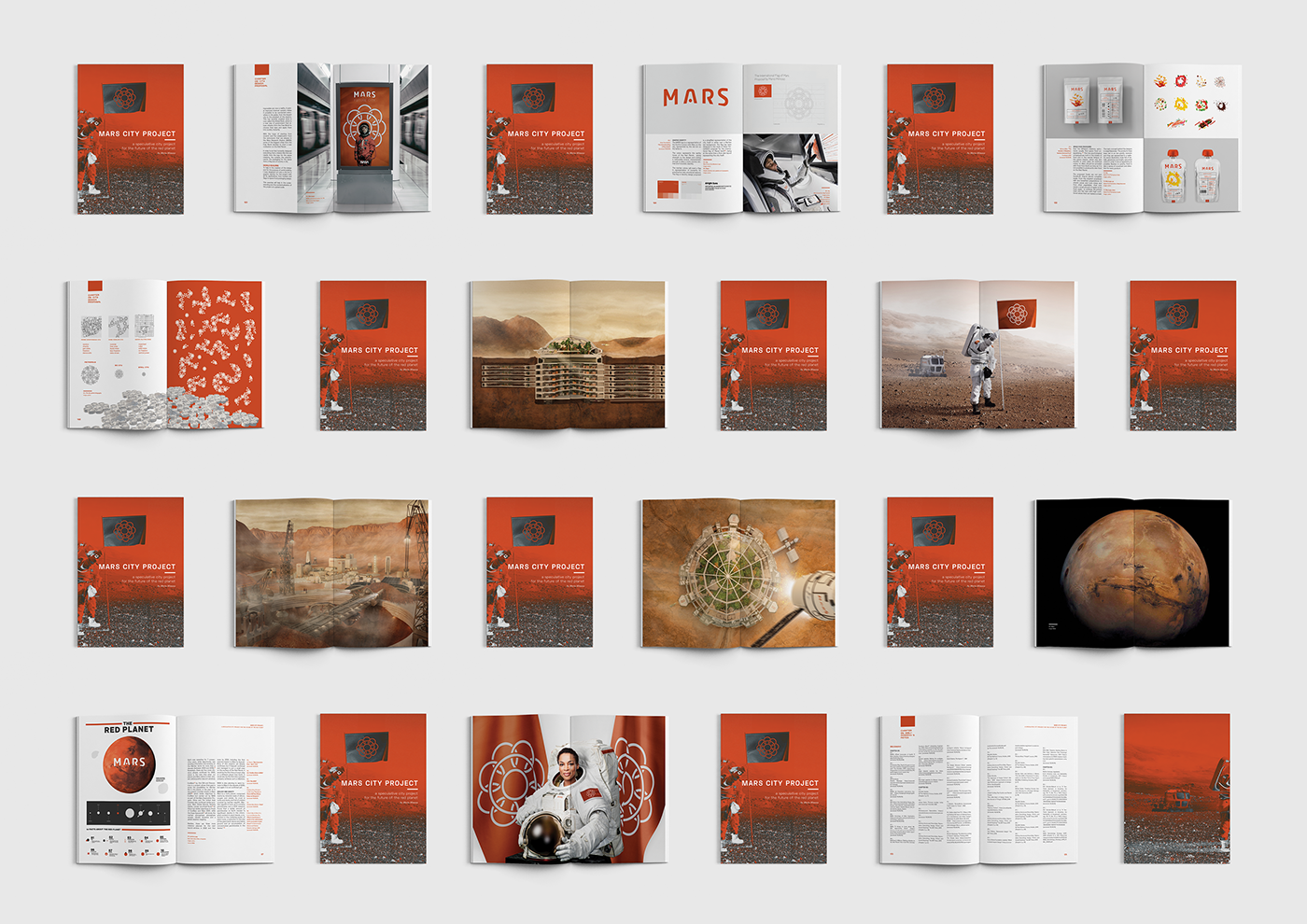
A C O N T E X T F O R T H E P R O J E C T
Having played with several scenarios, I chose to design a city for a world more than 100 years ahead of ours. During this time, as predictions suggest, global warming is impacting our planet so much that we no longer have ice polar caps and many coastal cities have been drowned by the rise of the sea level. At the same time, temperature has risen more than 13º average, making human life impossible in many regions of our planet where before there used to be cities and life was abundant. Many animal species have disappeared due to climate change and the globe is loosing its last significant amounts of trees: forest and jungles are being reduced either by climate change, wars or by the mass production of human goods.
Economically, capitalism is starting to become an exhaust financial system: both because there are no more natural resources in our planet to deplete and because society is radically divided between those who are rich and can afford luxury items and those who live in factual poverty. There are no more materials to mass produce new products and society can not afford them anyways. The most accurate analysts (AI independent softwares) predict that capitalism will be over in the next decade and experts have not found an alternative in which they agree upon. Raids and riots are continuous in the most important cities of the world and some governments have fallen because of citizens' revolutions. Countries are not as relevant as they were before, and cities have taken their place. The country is now what feeds the cities, which are increasingly becoming bigger both in size and in power.
Politically, there have been many wars in the last century, mainly between the biggest cities in the world (New York and Moscow against Pyongyang and China, London and Glasgow against Paris and Berlin, Barcelona against Madrid, and the small, constant wars between the Unified American Cities and California and New York). Some of these cities used nuclear weapons in specific locations of the planet, worsening the climate change and causing mass destruction all over. While many countries are still democracies, some of them are ruled by dictatorships or even by private companies and banks, who were able to buy them as a result of their bankruptcy: Africa is a huge desert, no humans live there besides small industrial towns and small cities ruled by banks and tech companies.
Technology has taken over humans’ lives and things that before seemed impossible are now a reality. A global improved internet system makes it possible to be connected everywhere in the globe, from the largest city to the emptiest of the deserts. This has recently enabled what is now called the Global Brain, which is a new way of government that allows citizens from the Free World to choose their laws and apply them into society instantly. With the hope of starting from scratch and the collaboration from the astronauts that are already in the Mars Research Station (MARS) some of the biggest cities from the Free World decided to start a new civilization on the Red Planet…
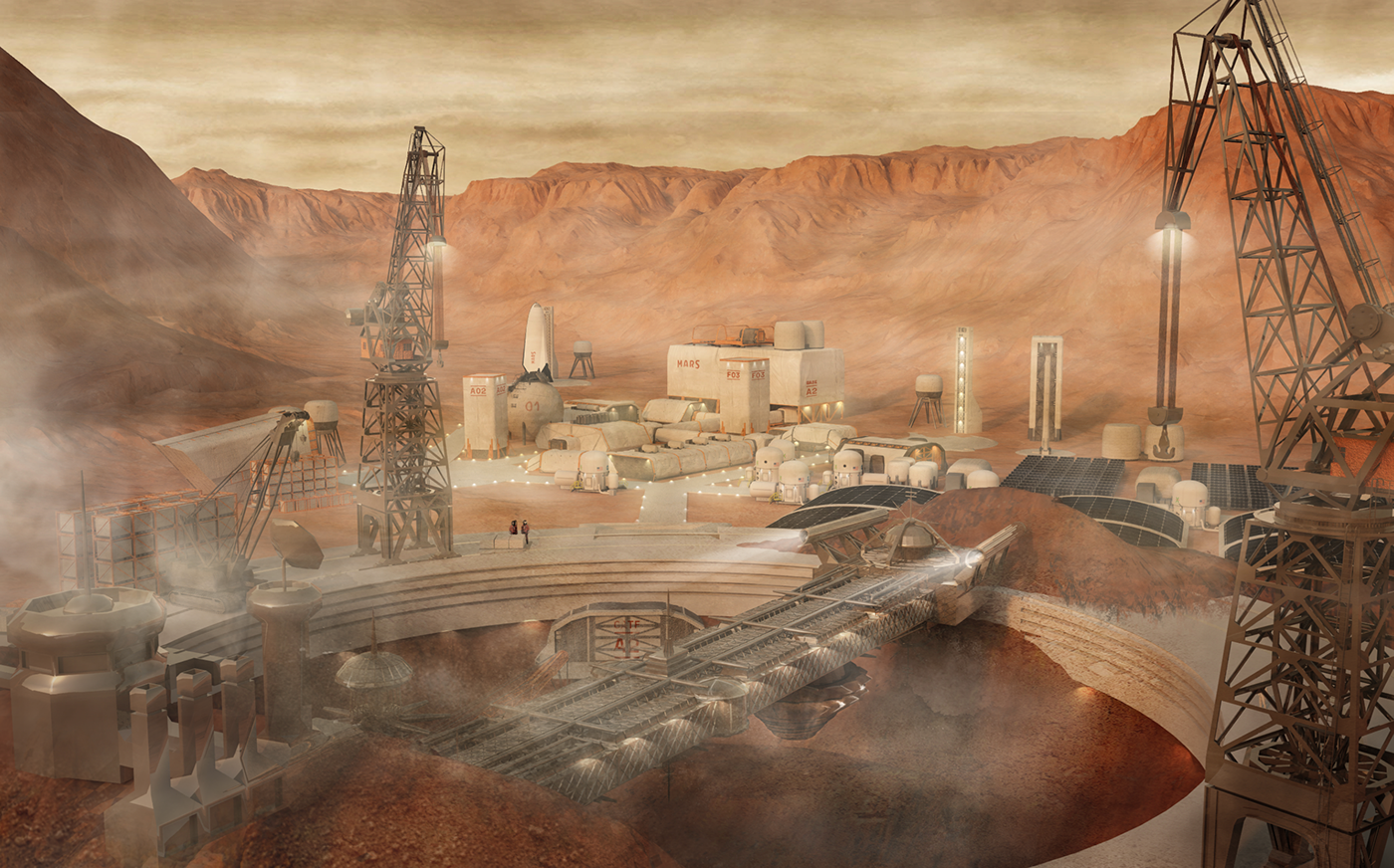
I have concept-designed a machine that could dig the martian ground, which is soft and mainly made of clay, in a vertical way. This machine is both a boring machine and an industrial 3D printer. It will consist basically on a huge robotic arm that con rotate pivoting on its two sides, along circular rails. The same machine will be the base structure for a 3D printer that will reuse the remanent material from the martian ground to print the basic structure of the city. To facilitate this task, it would be easier to start the city in an already existing small crater or valley.
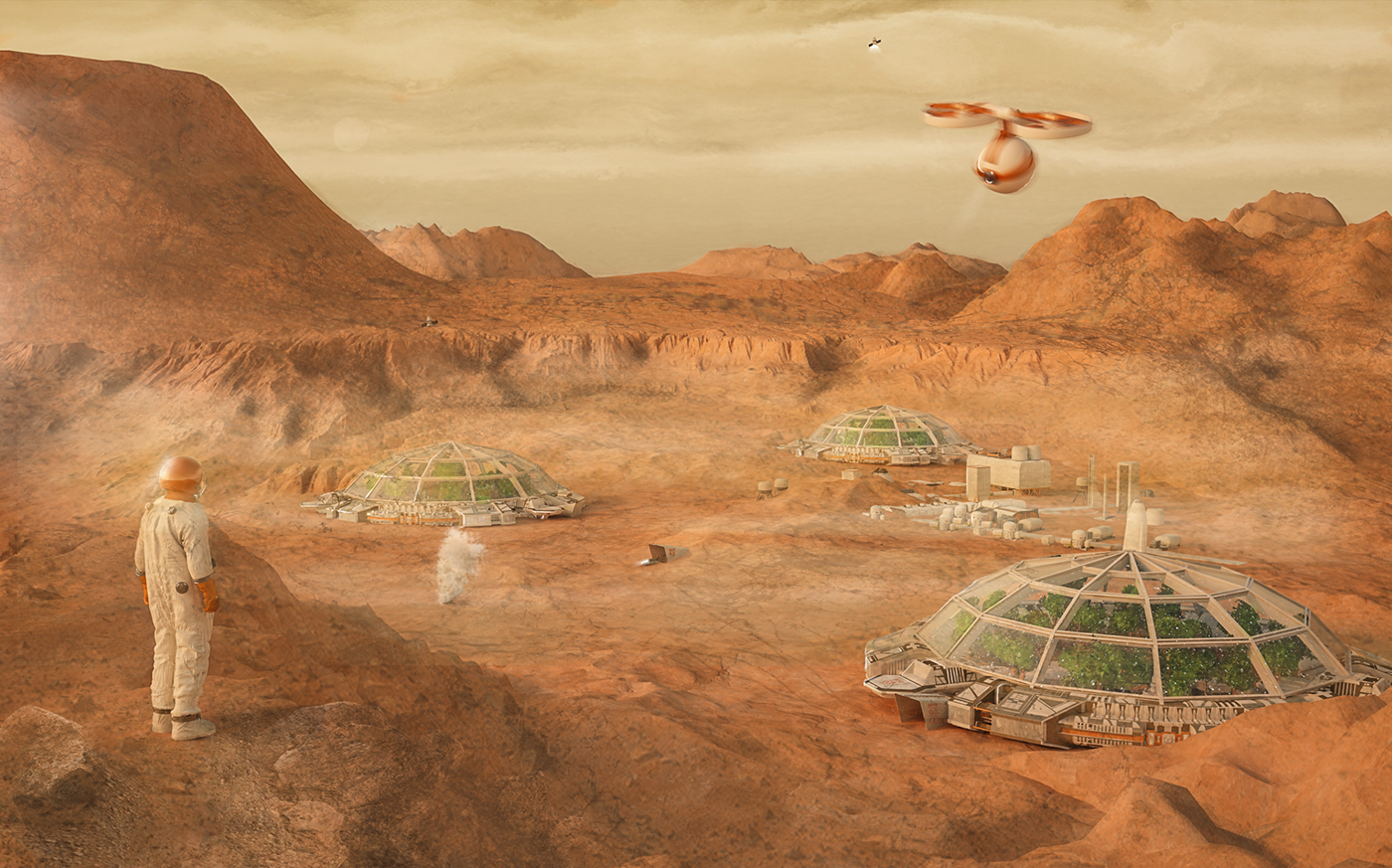
A city located in Valles Marineris would have the warmest temperatures on Mars, highly probable access to water deposits, more atmospheric pressure and certain protection against radiation and meteorites. Another benefit of creating a city on a gulf is that, in order to further terraform Mars, one of the biggest issues that we could find is the lack of magnetic field. Magnetic field protects the atmosphere from solar radiation, and this mixed with the low gravity of Mars, would create a really difficult challenge to overcome in order to create a breathable atmosphere. Maybe one of our only options would be to create a huge transparent dome or mega-structure containing not only a city but a wider region. In a valley like Valles Marineris, this task could be somehow simplified and maybe we would only need to cover the top of the gulf.

The structure and the shape of the city will be also based on what an AI software calculates it is best for the city. For example, if the city needs a bigger supply of water, the city will tend to grow towards a subterranean water deposit, if the knowledge is available. Similarly, if the city needs clay or iron provisions, the software will recalculate its parameters to make sure the city reaches a mineral ore.
Therefore, instead of designing a city itself, I am design a system that can be first sensible and then adaptable to the conditions, both external and internal, and grow as needed by its citizens: a self-contained, self-replicated and self-sustainable city. In order to do this in a more efficient way and to give a certain structure and order to this idea, the city will need to be modular.
SMALL MODULES: the neighborhoods
The small modules, called sectors, are essentially the residential areas of the city and they are radially distributed by branches: eight branches in total. On each branch, there are two different streets (one on each side), and in every street there can be a maximum of 20 houses. Approximately, an average amount of 650 people can live on every sector.
MEDIUM MODULES: the town
The medium modules, called districts, are the working, “commercial” and recreational areas of the cities. Their shape is also circular but they are not distributed radially. Every district can be connected and support the inhabitants of its surrounding sectors up to a maximum of six.
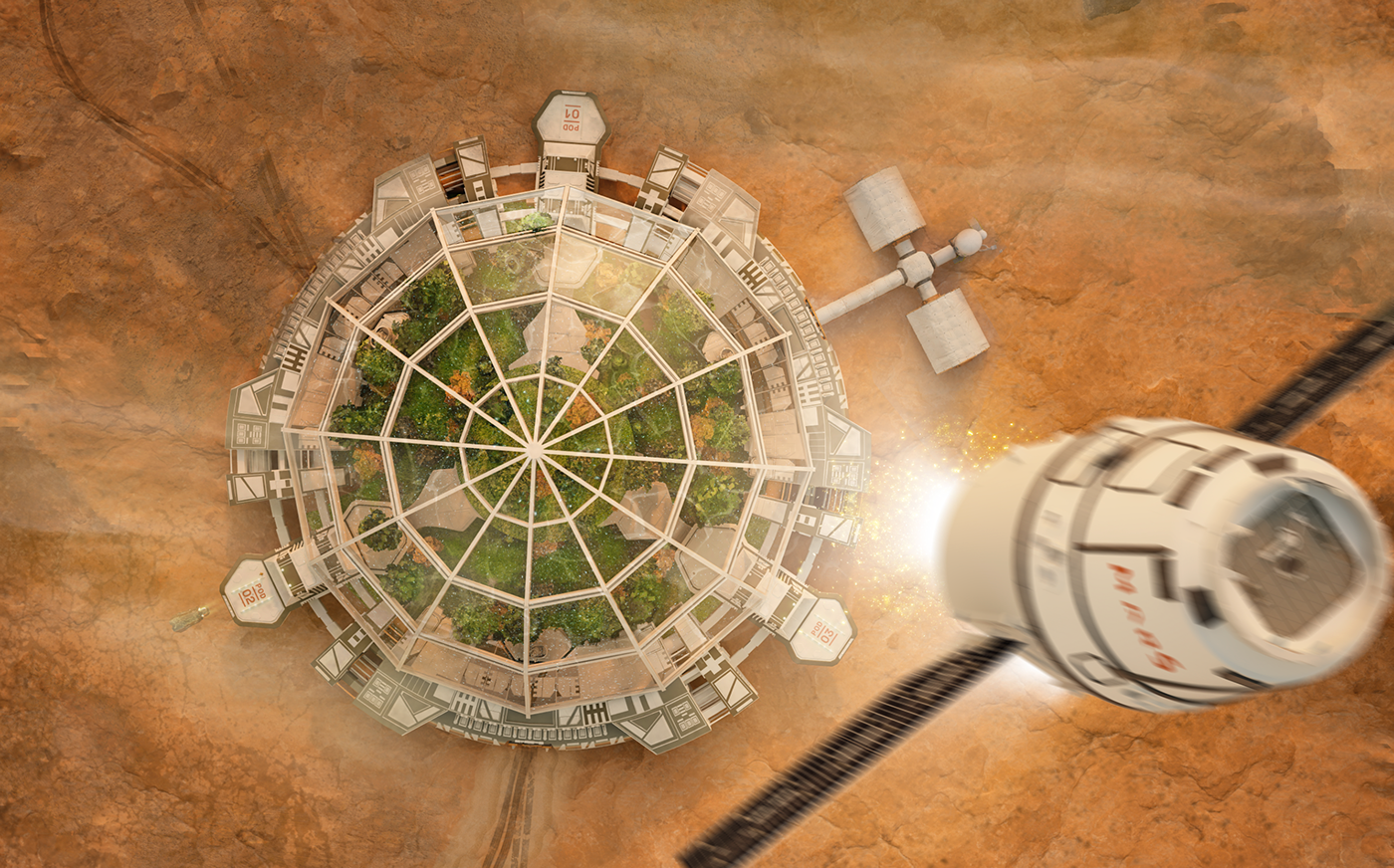
BIG MODULES: the city
Although the city has no cores for it is an ever-growing decentralized organism, we could say that the biggest modules, called cities, domes or metropolis, are the core of the structure. They are bigger circular structures on the surface of Mars, linking the city with the exterior of the planet.
Each dome is made of a structure of martian iron and two thick glass-like transparent material layers to close the voids. Between the glass, liquid water will constantly flow from the top to the bottom (and back again) in order to provide protection against radiation and to keep temperature under control inside the city. In this water, there will be living organisms like algae that will naturally produce oxygen, which will be stored and used to create the artificial atmosphere inside the city.
The domes are a crucial element for the city, as they provide shelter and protection from sandstorms, meteorites and cosmic and solar radiation. However, the use of a lighter space suit during the time under the dome will still be required or advised.
The dome also provides connection with the outside, being the perfect location for labs and research facilities or outdoor greenhouses that need to be in contact with the martian ground and environment. In addition, it will be the connection point for spaceships, terrestrial vehicles and so on that want to leave or arrive to the city. Antennas and internet and radio stations will be located on top of the dome, too.

